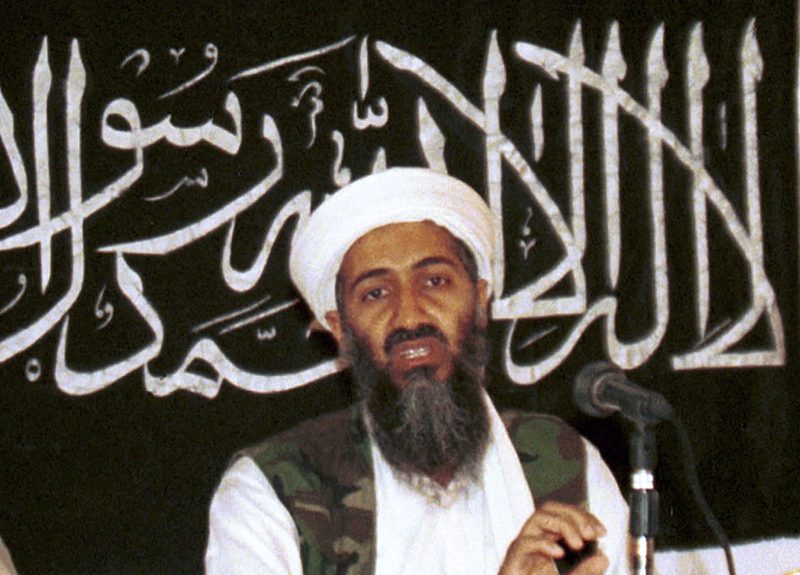On Monday, a TikTok user with 371 followers, using the screen name “_monix2,” posted a video where she read parts of Osama bin Laden’s “Letter to America,” in which the late terrorist leader said his killings of nearly 3,000 Americans in the Sept. 11, 2001, attacks had been justified by the United States’ support of Israel’s “occupation” of Palestine.
By Wednesday night, the letter had become a point of discussion among left-wing creators on the wildly popular video app, with some saying its critiques of American foreign policy had opened their eyes to a history they’d never learned.
But the letter didn’t rank among TikTok’s top trends. Videos with the #lettertoamerica hashtag had been seen about 2 million times — a relatively low count on a wildly popular app with 150 million accounts in the United States alone.
Then that evening, the journalist Yashar Ali shared a compilation he’d made of the TikTok videos in a post on X, formerly Twitter. That post has been viewed more than 28 million times. By Thursday afternoon, when TikTok announced it had banned the hashtag and dozens of similar variations, TikTok videos tagged #lettertoamerica had gained more than 15 million views.
The letter’s spread sparked a deluge of commentary, with some worrying that TikTok’s users were being radicalized by a terrorist manifesto, and TikTok’s critics arguing it was evidence that the app, owned by the Chinese tech giant ByteDance, had been secretly boosting propaganda to a captive audience of American youth.
But the letter’s spread also reflected the bedeviling realities of modern social media, where young people — many of whom were born after 9/11 — share and receive information on fast-paced smartphone apps designed to make videos go viral, regardless of their content.
It also showed how efforts to suppress such information can backfire. Many of the videos on TikTok were posted after the British newspaper the Guardian, which had hosted a copy of bin Laden’s letter, removed it. Some TikTokers said the removal was proof of the letter’s wisdom and importance, leading them to further amplify it as a result.
“Don’t turn the long-public ravings of a terrorist into forbidden knowledge, something people feel excited to go rediscover,” Renee DiResta, a research manager at the Stanford internet Observatory who has advised Congress on online disinformation, wrote Thursday in a post on Threads. “Let people read the murderer’s demands — this is the man some TikTok fools chose to glorify. Add more context.”
TikTok spokesman Alex Haurek said Thursday that the company was “proactively and aggressively” removing videos promoting the letter for violating the company’s rules on “supporting any form of terrorism” and said it was “investigating” how the videos got onto its platform.
Haurek said that the #lettertoamerica hashtag had been attached to 274 videos that had garnered 1.8 million views on Tuesday and Wednesday, before “the tweets and media coverage drove people to the hashtag.” Other hashtags, for comparison, dwarfed discussion of the letter on the platform: During a recent 24-hour period, #travel videos had 137 million views, #skin care videos had 252 million views and #anime videos had 611 million views, Haurek said.
Ali said he made the compilation video Wednesday after seeing “thousands” of the videos and intentionally left out the “most incendiary examples” because he didn’t want the compilation to be removed from Instagram, where he also posted it.
He agreed the hashtag had never trended on TikTok but disputed the idea that the number of videos posted there had been “small,” saying, “Sure, in the context of a global platform. But not small enough to be minuscule or not important.”
Most of the videos have since been removed by TikTok, making it difficult to get a full tally. But a search for the letter Thursday morning by a Washington Post reporter revealed around 700 TikTok videos, only a few of which got more than 1 million views.
Such high view counts are common on TikTok, where videos are served up in rapid fashion and the average U.S. user watches for more than an hour a day. One viral video last month, in which a young woman discussed the pain of a 9-to-5 job, has more than 3 million views and 280,000 likes.
The videos featured many people saying they’d known little about bin Laden and were questioning what they’d been taught about American involvement around the world. Some said they were “trying to go back to life as normal” after reading it; in one video, a user scrolled through the full letter and said, “We’ve been lied to our entire lives.”
But while many pointed to bin Laden’s comments on Palestine, few highlighted the letter’s more extreme criticism of Western “immorality and debauchery,” including “acts of fornication, homosexuality, intoxicants, gambling and trading with interest.”
Many commenters also criticized giving the letter attention or worked to remind people that bin Laden had preached an antisemitic, sexist ideology that led to thousands of deaths. On the “_monix2” video, one commenter said, “You guys Bin Laden wrote this. Do y’all know what he did. What is wrong with y’all [oh my God. I guess] we’re supporting terrorism these days.” (Attempts to reach the @_monix2 account were unsuccessful.)
Charlie Winter, a specialist in Islamist militant affairs and director of research at the intelligence platform ExTrac, said in an interview Thursday that he was “frankly really quite surprised at the response” to the letter, which he described as “a kind of core doctrinal text” for both al-Qaeda and the Islamic State terrorist group.
In addition to long-standing grievances, the letter contains “blatant language that is clearly calling for acts of genocide … [and] for killing noncombatants in any nation that is democratic and is fighting against a Muslim-majority state,” he said.
“It’s not the letter that is going viral. It’s a selective reading of parts of the letter that’s going viral,” he said. “And I don’t know whether it’s because people aren’t actually reading it or, when they’re reading it, they’re reading the bits that they want to see.”
The letter’s spread online was celebrated Thursday by users on al-Qaeda forums, according to SITE Intelligence Group, which tracks online extremism. One user Thursday wrote that Islamist militants should capitalize on the opportunity, saying, “I hope you all are seeing ongoing storm on Social Media. … We should post more and more content.”
Some of the TikTok creators who shared the letter posted follow-up videos saying they did not support terrorism or violence. One of the first TikTok creators to share it, and who spoke to The Post on the condition that her name not be included in the story, said she had encouraged people to read it for “educational purposes.”
She said she did not “condone nor justify” bin Laden’s actions and was “distancing [herself] from this entire situation.” “It’s a sad world if we cannot even read a public document, simply to educate ourselves, without being smeared online,” she said.
TikTok has faced criticism and calls for a nationwide ban due to the popularity of pro-Palestinian videos on the app compared with pro-Israel content, even though Facebook and Instagram show a similar gap. In a video call organized by TikTok on Wednesday, first reported by the New York Times, some Hollywood actors and TikTok creators pushed company executives to do more to crack down on antisemitic content.
But the idea that the “Letter to America” discussion solely began on TikTok is challenged by Google data, which show that search interest in the “bin Laden letter” began gathering last week, days before it became a topic of TikTok conversation.
And TikTok is far from the only place where the letter has been discussed. Though Instagram blocked searches for some hashtags, some videos related to the letter — including those critical of it — remained publicly viewable Thursday on the Meta-owned app.
On Thursday afternoon, searches for “letter to America” on Instagram were still being given a “Popular” tag. One post, a series of screenshots of the letter, had more than 10,000 likes as of Thursday afternoon.
On Thursday, the letter and bin Laden’s name were also “trending topics” on X, the social network owned by Elon Musk. One tweet there from Wednesday — in which the writer said reading the letter was like feeling a “glass wall shatter,” and asks, “Is this what ex cult members feel like when they become self aware” — remained online Thursday, with nearly 3 million views.
The letter — a nearly 4,000-word translation of the al-Qaeda leader’s comments — had been originally posted in Arabic on a Saudi Arabian website used to disseminate al-Qaeda messages. The Guardian originally published an English translation in 2002 alongside a news article that offered more detail on how it had begun circulating among “British Islamic extremists.”
Though the Guardian removed the letter on Wednesday, its replacement, a page called “Removed: document,” had by Thursday become one of the most-viewed stories on the newspaper’s website. Some TikTokers voiced anger at the newspaper for, in the words of one, “actively censoring” information.
A spokesperson for the Guardian said in a statement that the letter had been removed after it was “widely shared on social media without the full context.”
The editors of the Guardian faced a “no-win scenario” once interest in bin Laden’s letter began to grow, Marco Bastos, a senior lecturer in media and communication at City, University of London, said in a phone interview.
“If they don’t take down the content, the content will be leveraged and it will be discussed, potentially shared and is going to go viral — if not out of context, then certainly outside of the scope of the original piece,” Bastos said. “If they take it down, they’re going to be accused, as they are right now, of censorship.”
At the time of publication, the editors “expected that this letter would be read critically, you know, adversarially … that you would process this within the view — or the bias, if you prefer — of the Western side of the events,” Bastos added. “And now it’s being consumed, distributed and shared to push an agenda that’s precisely the opposite of the one that it was originally intended for.”
Winter, the Islamist militant affairs specialist, said he found it “kind of ironic” that the letter was being shared uncritically around the web.
“People who consider themselves to be critical consumers of mainstream media are consuming this very uncritically and not thinking about the context around it,” he said. “Not thinking about everything that happened just over a year before it was published as well, in any meaningful way.”
Bisset reported from London.



























